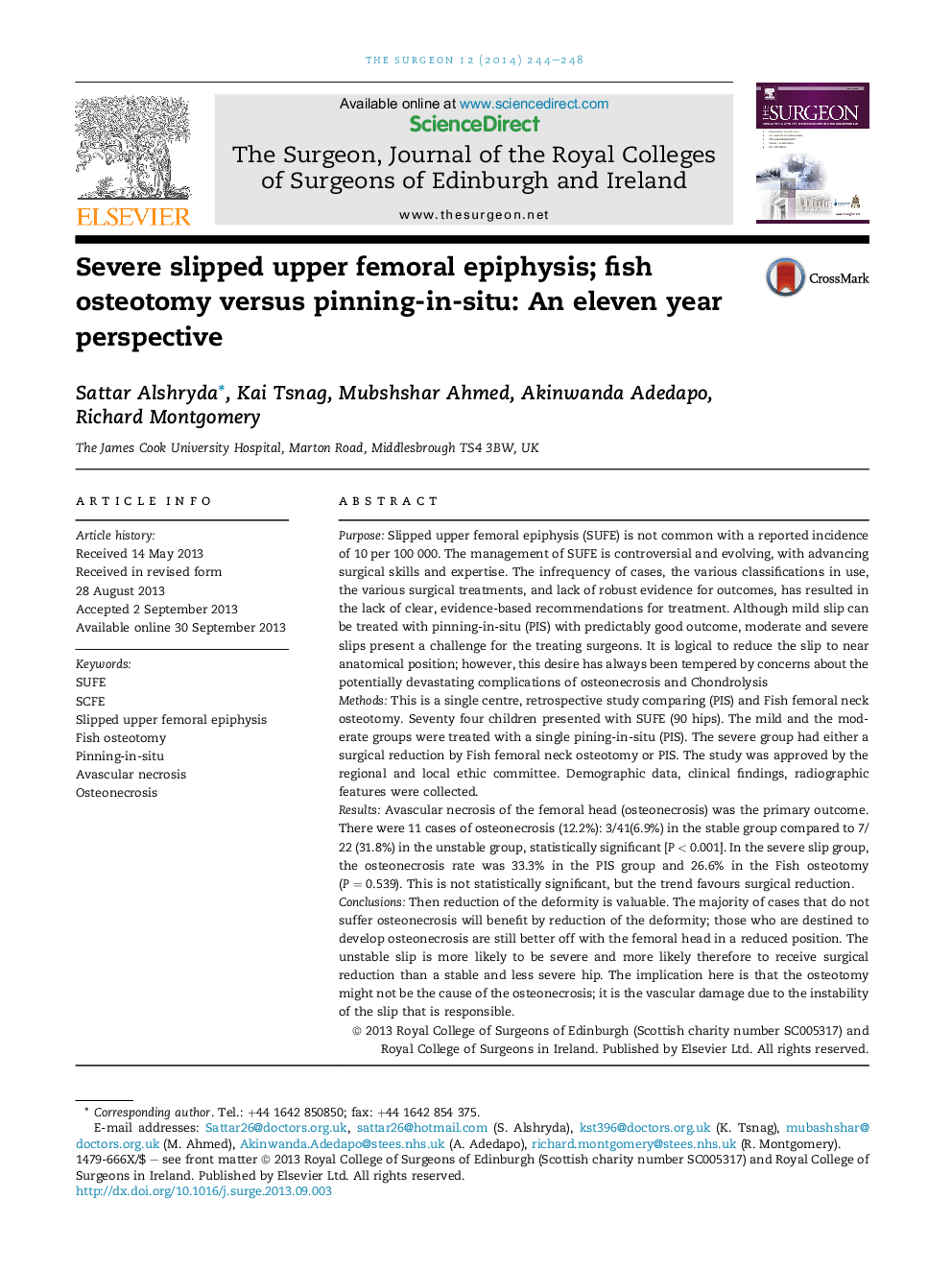| کد مقاله | کد نشریه | سال انتشار | مقاله انگلیسی | نسخه تمام متن |
|---|---|---|---|---|
| 3178666 | 1200399 | 2014 | 5 صفحه PDF | دانلود رایگان |
PurposeSlipped upper femoral epiphysis (SUFE) is not common with a reported incidence of 10 per 100 000. The management of SUFE is controversial and evolving, with advancing surgical skills and expertise. The infrequency of cases, the various classifications in use, the various surgical treatments, and lack of robust evidence for outcomes, has resulted in the lack of clear, evidence-based recommendations for treatment. Although mild slip can be treated with pinning-in-situ (PIS) with predictably good outcome, moderate and severe slips present a challenge for the treating surgeons. It is logical to reduce the slip to near anatomical position; however, this desire has always been tempered by concerns about the potentially devastating complications of osteonecrosis and ChondrolysisMethodsThis is a single centre, retrospective study comparing (PIS) and Fish femoral neck osteotomy. Seventy four children presented with SUFE (90 hips). The mild and the moderate groups were treated with a single pining-in-situ (PIS). The severe group had either a surgical reduction by Fish femoral neck osteotomy or PIS. The study was approved by the regional and local ethic committee. Demographic data, clinical findings, radiographic features were collected.ResultsAvascular necrosis of the femoral head (osteonecrosis) was the primary outcome. There were 11 cases of osteonecrosis (12.2%): 3/41(6.9%) in the stable group compared to 7/22 (31.8%) in the unstable group, statistically significant [P < 0.001]. In the severe slip group, the osteonecrosis rate was 33.3% in the PIS group and 26.6% in the Fish osteotomy (P = 0.539). This is not statistically significant, but the trend favours surgical reduction.ConclusionsThen reduction of the deformity is valuable. The majority of cases that do not suffer osteonecrosis will benefit by reduction of the deformity; those who are destined to develop osteonecrosis are still better off with the femoral head in a reduced position. The unstable slip is more likely to be severe and more likely therefore to receive surgical reduction than a stable and less severe hip. The implication here is that the osteotomy might not be the cause of the osteonecrosis; it is the vascular damage due to the instability of the slip that is responsible.
Journal: The Surgeon - Volume 12, Issue 5, October 2014, Pages 244–248
